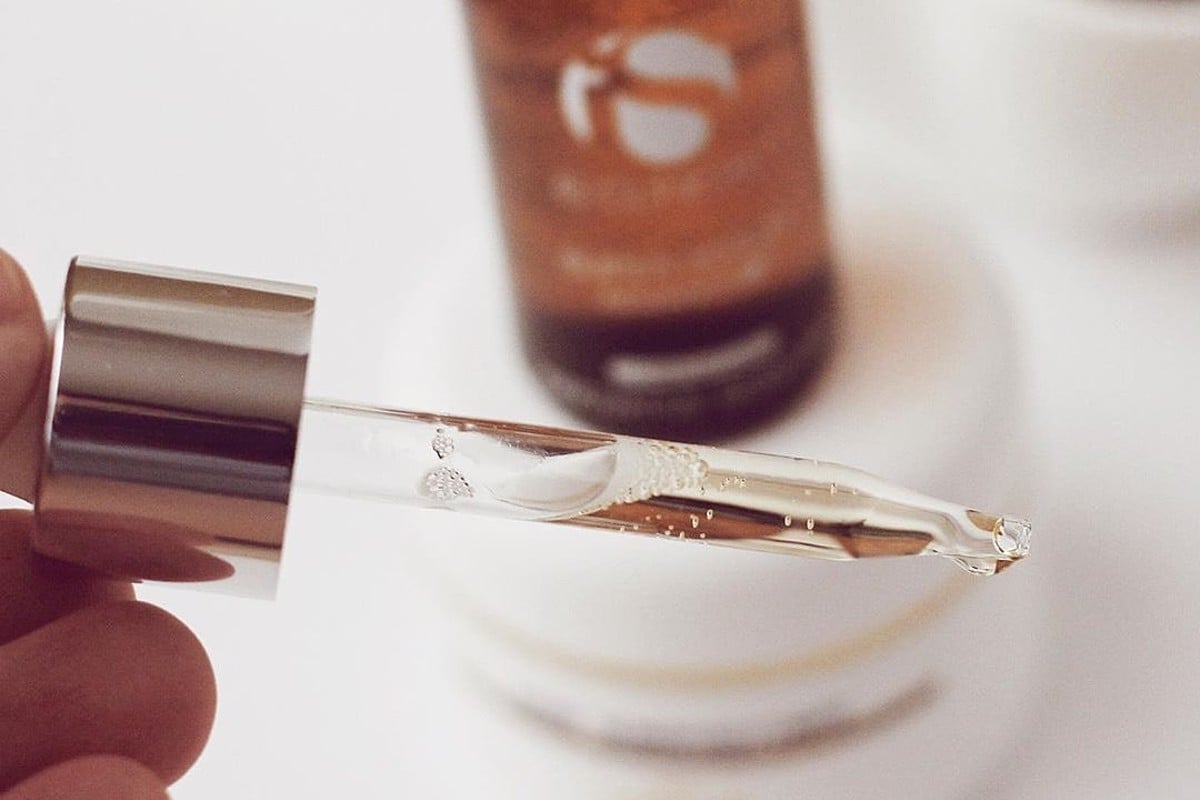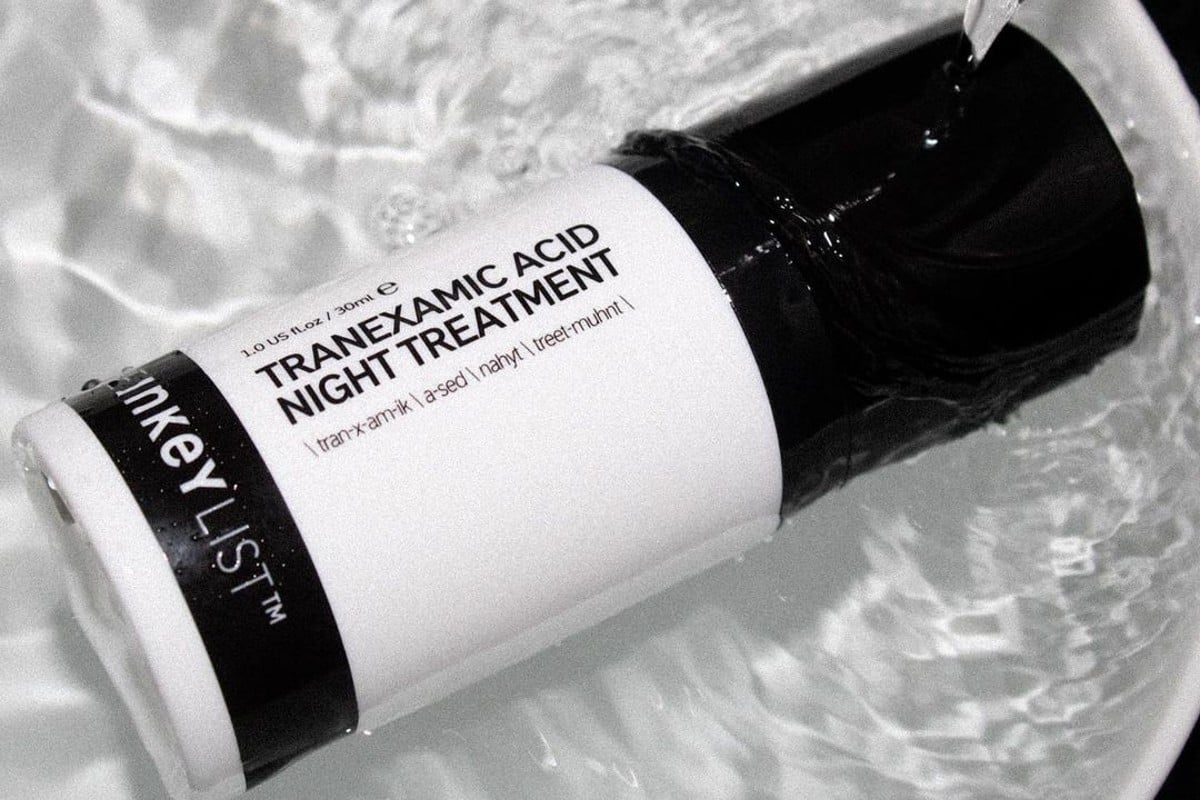Whatever has caused your dark spots, there is an array of ways to reduce their appearance — be it a slight change in your lifestyle, a new product in your skincare routine, or in-office treatments. Just abide by the steps below, and dark spots will become just a bad memory.
Although uneven tone is an aesthetic concern rather than a skin condition, most people who have it won’t quit until they find out how to get rid of dark spots. There are a few types of dark spots, such as sunspots, age spots, melasma, and post-acne marks, and all have in common the same thing: they occur as a result of the over-production of melanin on some areas of the face. Even though they’re harmless, dark spots can be frustrating since they make it impossible to maintain a perfectly even tone, which is the most sought-after trait for most of us.
This post gives you all the answers, including ingredients, products, and interventions on how to fade dark spots and how to prevent your complexion from getting uneven in the first place. On we go.
What causes dark spots?
UV exposure is the major contributor to dark spots, which result from excess melanin (the pigment that darkens skin), causing irregular toned patches and hyperpigmentation. Melanin production is a natural reaction of the skin to prevent UV damage from further weakening the DNA and skin. Other causes of dark spots include aging, hormonal changes, acne, or scarring.[1]
How to get rid of dark spots
Since dark spots are a result of excess melanin in the skin, you should address them with treatments that work in the deeper layer to reduce pigment content in cells. Furthermore, it’s crucial to exfoliate regularly to dissolve the dead cells harboring excess pigment from the skin’s surface.
The good news is that there are plenty of ingredients and cosmetic procedures to help you fade dark spots, which takes us to the next part:
Sun protection
With sun damage being the leading cause of dark spots, it’s no surprise that sunscreen is the first line of defense against hyperpigmentation. A broad-spectrum sunscreen with at least SPF 30 should always be the last step of your morning skincare routine, and reapplying it every two hours when you spend time outside is key to supporting an even tone.
We suggest La Roche-Posay Anthelios Mineral Sunscreen SPF 50 because it provides UVA and UVB protection, is void of fragrance, offers mineral sun protection, and suits all skin types, sensitive included. Suppose you wear makeup daily and find reapplication of sunscreen a problematic task. In that case, consider Colorescience Brush-On Sunscreen Mineral Powder which allows for easy touch-ups even on top of makeup while containing earth-derived minerals to give SPF 50 broad-spectrum defense.
Antioxidants
Antioxidants are excellent as a preventative measure against further dark spots, so you should incorporate them into your daily beauty regimen too. Sun exposure and other causes, like smoke and pollution, lead to an increase in free radicals, which in turn damages the skin structure and increases melanin. Antioxidants have a mitigating effect on dark patches as they donate an electron to the incomplete molecules of free radicals, preventing them from damaging the skin and causing uneven tone.[2]
Although they work best to prevent discoloration in the first place, some antioxidants like vitamin C, resveratrol, and niacinamide also have brightening effects as they interfere with melanin production. Of all, vitamin C is the most potent at preventing UV-induced hyperpigmentation, which is why it is often added to sun-shielding formulas, like our favorite vitamin C-infused sunscreens.[3]
Retinol
Another tried-and-true treatment for dark spots is retinol — a vitamin A derivative with antioxidant benefits. Here’s the gist: thanks to its ability to promote cell turnover, retinol removes old cells that have accumulated excess pigment and brings the new, brighter ones to the surface, resulting in less discoloration over time. Besides, retinol helps fade dark spots by hindering the activity of melanin-producing cells (melanocytes). According to research, it can diminish hyperpigmentation by 60% and contribute to a proper distribution of pigment in the skin.[4] To reap the most benefits, use your retinol serum in your nighttime regimen at least once every two days.
Exfoliation
Weekly exfoliation is essential to get rid of dark spots because it slows off the buildup of dead, discolored cells, revealing evenly pigmented skin. Chemical exfoliants with alpha-hydroxy acids, such as lactic acid and glycolic acid, work to loosen the bond between cells and remove the top, pigmented layer, revealing fresh, even skin. Besides, both glycolic and lactic acids interfere with melanin production and deliver brightening effects when used in the long run.[5] So, consider using a glycolic acid peel or a gentle lactic acid peel if your skin is more reactive once or twice a week and observe how dark spots fade away.
Cosmetic procedures for dark spots
If none of the above worked for you, or you’re after dramatic results, in-office procedures like laser treatments, chemical peels, cryotherapy, or dermabrasion may be your best bet. They work amazingly for more severe conditions, and the results can be seen after the first session once the skin is recovered. Just make sure you put yourself in the hands of a professional with experience in such treatments.
Ingredients that can diminish dark spots
For maximum benefits, it’s good to know about these major brightening ingredients and include them in your skincare routine.
- Hydroquinone
- Tretinoin
- Kojic acid
- Alpha arbutin
- Retinol
- Vitamin C
- Glycolic acid
- Tranexamic acid
- Green tea
- Resorcinol
- Niacinamide
- Glucosamine
Are natural treatments effective for dark spots?
Some natural remedies can tackle dark spots due to the lightening compounds they consist of. For instance, coconut milk was found to fade the look of dark spots when used for four weeks.[6] Simply soak a cotton ball, tap hyperpigmented areas with coconut milk and rinse with lukewarm water after one hour. Other natural remedies for hyperpigmentation include mulberry, licorice, arbutin, green tea, and turmeric.[7]
Final words
Some dark spots can indeed fade on their own through the natural skin’s exfoliation process, which takes place every 28 days. But since with age, the natural process of shedding off dead cells slows down, it’s essential to support the process by using exfoliants. Furthermore, sticking to a diligent skincare routine that includes tone-evening ingredients, like vitamin C and niacinamide, wearing sunscreen with at least SPF 30 daily, and applying antioxidants are mandatory. And, for stubborn dark spots, you can appeal to cosmetic procedures like laser resurfacing or chemical peels if necessary.
Read next: 14 Best Serums for Hyperpigmentation: Dark Spots Correctors
Sources
Women’s Concepts uses reliable sources, including dermatologists’ insights, clinical trials, and scientific journals, to find accurate information and support all the facts shared in our articles. All statements and claims have clear and legit references. Read our editorial policy to learn more about our sources of information, our process of researching and fact-checking the content, and how our team strives to keep all articles updated, completed, and trustworthy.
- Vashi NA, Kundu RV. Facial hyperpigmentation: causes and treatment. Br J Dermatol. 2013 Oct;169 Suppl 3:41-56. doi: 10.1111/bjd.12536. PMID: 24098900.
- Nahhas, AF, Abdel-Malek, ZA, Kohli, I, Braunberger, TL, Lim, HW, Hamzavi, IH. The potential role of antioxidants in mitigating skin hyperpigmentation resulting from ultraviolet and visible light-induced oxidative stress. Photodermatol Photoimmunol Photomed. 2019; 35: 420– 428. https://doi.org/10.1111/phpp.12423
- De Dormael R, Bastien P, Sextius P, Gueniche A, Ye D, Tran C, Chevalier V, Gomes C, Souverain L, Tricaud C. Vitamin C Prevents Ultraviolet-induced Pigmentation in Healthy Volunteers: Bayesian Meta-analysis Results from 31 Randomized Controlled versus Vehicle Clinical Studies. J Clin Aesthet Dermatol. 2019 Feb;12(2):E53-E59. Epub 2019 Feb 1. PMID: 30881584; PMCID: PMC6415704.
- Zasada M, Budzisz E. Retinoids: active molecules influencing skin structure formation in cosmetic and dermatological treatments. Postepy Dermatol Alergol. 2019;36(4):392-397. doi:10.5114/ada.2019.87443
- Usuki A, Ohashi A, Sato H, Ochiai Y, Ichihashi M, Funasaka Y. The inhibitory effect of glycolic acid and lactic acid on melanin synthesis in melanoma cells. Exp Dermatol. 2003;12 Suppl 2:43-50. doi: 10.1034/j.1600-0625.12.s2.7.x. PMID: 14756523.
- Kusstianti, Nia & Usodoningtyas, Sri. (2020). Coconut Milk as an Alternative of Cosmetic Material for Thinning Hyperpigmentation on the Face Skin. 10.2991/aer.k.201124.056.
- Hollinger JC, Angra K, Halder RM. Are Natural Ingredients Effective in the Management of Hyperpigmentation? A Systematic Review. J Clin Aesthet Dermatol. 2018;11(2):28-37.





